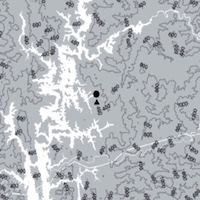 Smart Citations
Smart CitationsSee how this article has been cited at scite.ai
scite shows how a scientific paper has been cited by providing the context of the citation, a classification describing whether it supports, mentions, or contrasts the cited claim, and a label indicating in which section the citation was made.
Physical factors at salt licks influenced the frequency of wildlife visitation in the Malaysian tropical rainforest
Mineral reservoirs or salt licks are commonly used by wildlife to regulate the concentration of salt and minerals in their bodies. Salt lick utilisation is known to be influenced by the chemical composition, but information on their physical properties, particularly vegetation surrounding the salt licks is scarce. In this study, physical factors and wildlife utilisation at two natural salt licks (SPU and SPS) located in Perak, Malaysia, were determined. Wildlife visitation data were retrieved from camera traps. SPU exhibits two reservoirs represented by rocky and clay substrate, with minimally dense vegetation dominated by hardwood species and climbers. SPS encompasses muddy topsoil, open canopy cover, with highly dense forest floor vegetation. The wildlife survey shows a higher frequency of visitation in SPS, especially by ungulates, potentially due to dense understorey foliage that provides foraging sites for these animals. SPU exhibits more diverse but less frequent wildlife species, particularly primates, carnivores, and avian groups. High emergence and closed canopy cover at this lick serve as perching sites for primates and birds, while less dense understory vegetation could aid in prey detection among carnivore. Regardless of their physical assemblages, salt licks are an essential local hotspot for wildlife, therefore, elucidating the need to prioritise conservation areas by maximising the complementarities of salt licks.
Supporting Agencies
Tenaga Nasional Berhad ResearchHow to Cite
PAGEPress has chosen to apply the Creative Commons Attribution NonCommercial 4.0 International License (CC BY-NC 4.0) to all manuscripts to be published.








